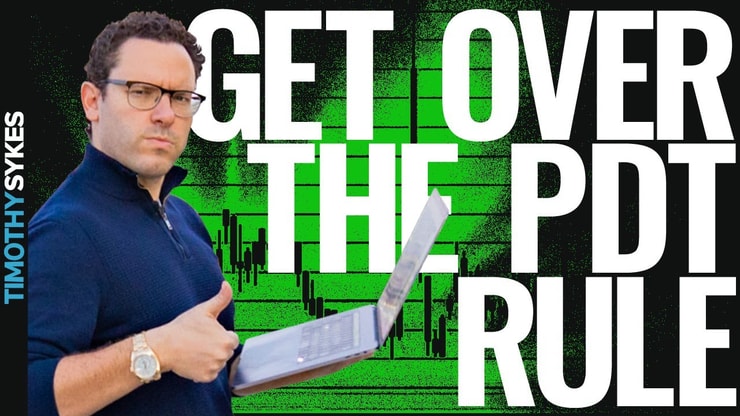The Pattern Day Trader Rule — the PDT for short — is a set of restrictions created for the purposes of protecting “unsophisticated investors” …
Yes, that’s the official term!
The security commission has another term for frequent traders. A pattern day trader, as defined by the Financial Industry Regulatory Authority (FINRA), is a trader who executes four or more day trades within five business days. But there’s a catch. These trades must account for more than six percent of the trader’s total trades in the margin account for that same five business day period. If you meet these criteria, congratulations, you’re a pattern day trader!
But being a pattern day trader isn’t just about the title. It comes with specific rules and requirements that can significantly impact your trading strategies. From minimum equity requirements to buying power calculations, pattern day trading is a whole different ball game.
I’ll walk you through the definition, rules, and workings of pattern day trading, giving you the knowledge you need to navigate the trading world confidently. Let’s get started!
Table of Contents
Overview of Pattern Day Trade Rules

Before we dive into the nitty-gritty of pattern day trading, let’s get a bird’s eye view of the rules. The Pattern Day Trader Rule, enforced by FINRA, is the main regulation you need to be aware of. It sets the criteria for who is considered a pattern day trader and outlines the requirements they need to meet.
These rules aren’t there to make your life difficult — although they might do so anyway! They’re designed to protect both you and the market from excessive risk.
Brokerage firms will restrict access to assets, investment products, and other services if your weekly day trades exceed the number you’re allowed. Aspiring day traders need to be content with holding a security position overnight at times, if they want to maintain their trading rights!
This can be the basis for some bad trades. For example, avoiding the PDT can pressure traders to look for a fill later than they would otherwise, or consider selling past their risk.
Definition of a Pattern Day Trader
A pattern day trader, as defined by the Financial Industry Regulatory Authority (FINRA), is any margin account customer who executes four or more day trades within five business days. But here’s the kicker: those trades must account for more than six percent of the customer’s total trades in the margin account for that same five business day period.
Difference Between Pattern Day Trading and Regular Trading
So, what’s the difference between pattern day trading and regular trading? It’s all about the frequency and the account type, my friend. Regular traders can be either cash account or margin account holders, but pattern day traders are strictly margin account holders. And while regular traders can make as many trades as they want, pattern day traders have specific rules they need to follow.
Day trading is the place where these two definitions collide. Day trading involves buying and selling securities within a single trading day, aiming to profit from short-term price fluctuations.
The one thing that both pattern day trading and regular day trading have in common is the need for education. Start by exploring the basics of day trading to get a solid foundation.
Margin Accounts and Requirements
Now, let’s talk about margin accounts. If you’re a pattern day trader, you’ll be doing your trading in a margin account. This type of account allows you to borrow money from your broker to purchase securities, potentially amplifying your profits. But be careful, it can also magnify your losses. And there are specific requirements you need to meet, like maintaining a minimum equity of $25,000. So, make sure you understand the ins and outs of margin trading before you jump in.
More Breaking News
- SEALSQ Stock Plunges: What’s Next for Investors?
- Is It Too Late for SoFi? Analysts Weigh In After Stock Dips
- Ocean Power Technologies: Riding the Wave of Innovation or Overheating?
Margin Accounts and the Pattern Day Trade Rule
Margin accounts are like a double-edged sword. They can amplify your gains, but they can also magnify your losses. And if you’re a pattern day trader, you’re playing in the margin account arena. This means you’re borrowing money from your brokerage firm to purchase securities, which can be risky business.
Minimum Equity Requirement for a Pattern Day Trader
Here’s the deal: if you’re a pattern day trader, you need to maintain a minimum equity of $25,000 in your account on any day that trades are made. It’s not a suggestion, it’s a requirement. And if you don’t meet this requirement? You’ll get a margin call, and trust me, that’s a call you don’t want to receive.
Leverage & Margin Trading
Leverage can be your best friend or your worst enemy. It allows you to borrow money to increase your buying power, but it also increases your risk. So, if you’re a pattern day trader, you need to understand how to use leverage wisely.
Business Days & Trading Days Explained

When it comes to trading, timing is everything. And that’s where understanding the difference between business days and trading days comes in. A business day is any day that businesses are generally open, typically Monday through Friday, excluding public holidays. A trading day, on the other hand, is any day the stock market is open for business. Knowing the difference can help you plan your trades more effectively and avoid potential pitfalls.
What is a Trading Day?
A trading day is any day the stock market is open for business. Simple, right? But remember, it’s not just about the United States. If you’re trading international stocks or forex, you need to consider the trading days in those markets too.
What is a Business Day?
A business day, on the other hand, is a bit broader. It’s any day that businesses are generally open, typically Monday through Friday, excluding public holidays. But here’s the thing: not all business days are trading days. So, keep that in mind when planning your trades.
Calculating Your Buying Power as a Pattern Day Trader

As a pattern day trader, your buying power is a key factor in your trading strategy. It determines how much you can trade on a given day. But calculating it can be a bit tricky. It involves understanding your account balance, your margin, and the specific rules of your brokerage. But don’t worry, once you get the hang of it, it’s a powerful tool in your trading arsenal.
Buying Power Calculation for Intraday Traders
As a pattern day trader, your buying power is four times the New York Stock Exchange (NYSE) excess as of the close of business on the previous day. Sounds complicated, right? But it’s crucial to understand this because it determines how much you can trade on a given day.
Initial Buying Power Calculation for Long Positions
When you’re going long, your initial buying power is the amount of money you have available in your account, plus any outstanding margin loans. But remember, if you’re a pattern day trader, you’re also subject to the $25,000 minimum equity requirement.
Initial Buying Power Calculation for Short Positions
Shorting stocks? Your initial buying power is the proceeds from your short sale, plus the required margin. But be careful, shorting stocks can be risky, especially if the stock price increases.
Maintenance Margin Requirements
Maintenance margin is the minimum amount of equity you need to maintain in your margin account. For pattern day traders, it’s usually 25% of the total value of the securities in your account. But remember, different brokers may have different requirements, so always check with your broker.
Regulations That Govern Pattern Day Traders
Pattern day traders are subject to specific regulations. These include the Pattern Day Trader Rule, which requires a minimum equity of $25,000, and the Margin Rule, which sets the minimum amount of margin a trader must maintain in their account. It’s not just about making money, it’s about following the rules too.
Of course, making money is important — and you need to know the basics of day trading for a chance at that! This includes knowing how to choose the right broker, understanding the market, and developing effective trading strategies.
If this sounds like something you need help with, check out my guide on day trading basics. It provides valuable insights that can set you on the path to becoming a successful day trader.
Ways Around the Pattern Day Trader Rule
So, you’re not a fan of the Pattern Day Trader Rule? You’re not alone. Many traders find it restrictive. But don’t worry, there are ways to work around it.
Whether it’s through multiple brokerage accounts or joining a proprietary trading firm, you have options. But remember, each comes with its own set of risks and requirements, and you’ll need the resources. Always do your homework before making a decision.
This homework starts with understanding what a day trade entails. If you don’t know this by heart, read this detailed explanation of the day trade definition. Understanding this concept can help you make informed decisions and develop effective trading strategies.
Open Multiple Brokerage Accounts
One way to sidestep the pattern day trader rule is to open multiple brokerage accounts. This isn’t a loophole, it’s perfectly legal. But remember, this strategy comes with its own risks. You’ll need to manage multiple accounts, and you’re still subject to the rules of each individual brokerage.
Join a Proprietary Trading Firm
Another option is to join a proprietary trading firm. These firms allow traders to use the firm’s capital to make trades, which can provide more flexibility. But remember, you’re trading with the firm’s money, so you’ll need to share your profits.
Key Takeaways

Pattern day trading isn’t for the faint of heart. It requires a solid understanding of the stock market, a keen eye for patterns, and the ability to act quickly. But if you’re willing to put in the time and effort, it can be a profitable strategy.
It isn’t a silver bullet for your trading plan — but the PDT is one of many topics you should learn as part of your trading education!
Trading isn’t rocket science. It’s a skill you build and work on like any other. Trading has changed my life, and I think this way of life should be open to more people…
I’ve built my Trading Challenge to pass on the things I had to learn for myself. It’s the kind of community that I wish I had when I was starting out.
We don’t accept everyone. If you’re up for the challenge — I want to hear from you.
Apply to the Trading Challenge here.
Trading is a battlefield. The more knowledge you have, the better prepared you’ll be.
How do you handle the PDT? Let me know in the comments — I love hearing from my readers!




Leave a reply